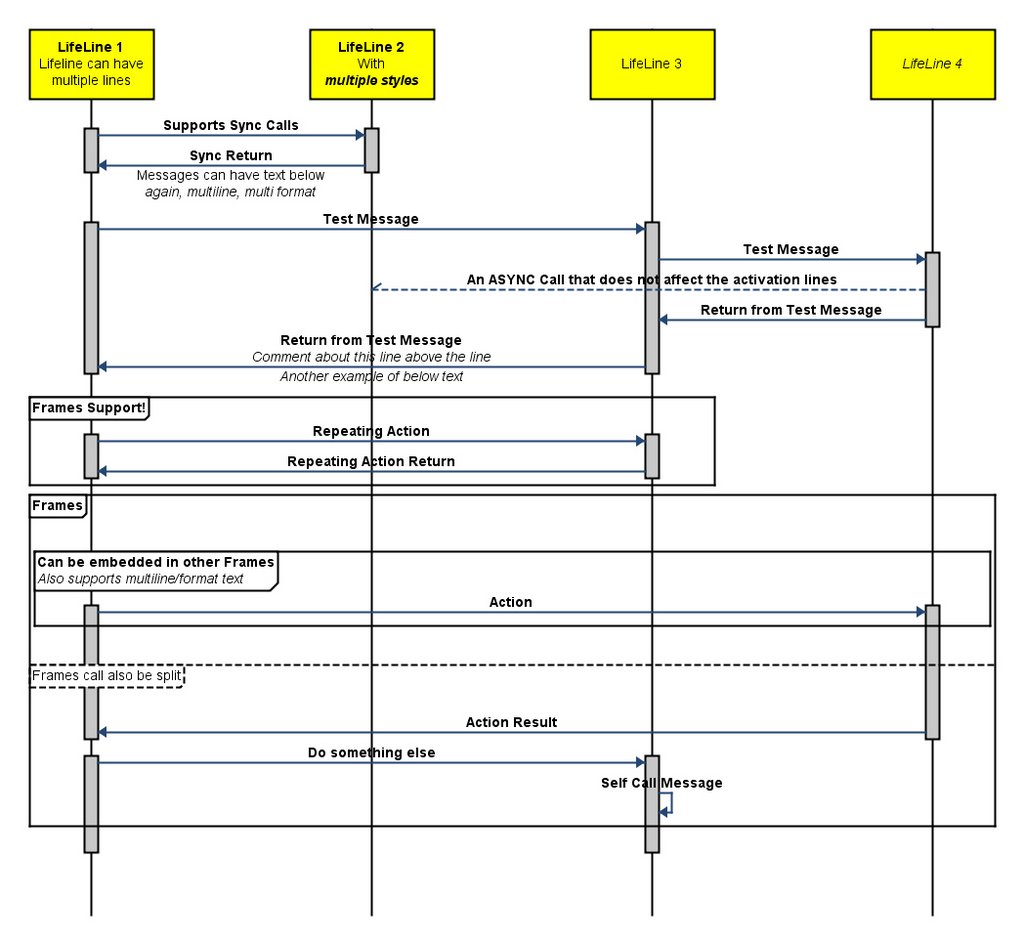
- EASY UML SEQUENCE DIAGRAM GENERATOR FOR FREE
- EASY UML SEQUENCE DIAGRAM GENERATOR HOW TO
- EASY UML SEQUENCE DIAGRAM GENERATOR SOFTWARE
Uml2.odesign Viewpoint Specification file. For the UML2 modeler, the semantic model is defined in The actions are disabled in the UI.Īs with any Sirius diagram, the semantic model used for a sequence diagram defines some elements and relationships that must be mapped to graphical elements in order to be represented on the sequence diagrams. Even if an element has been marked as pinned, Sirius must be able to move it graphically as needed in order to maintain the graphical order of element in sync with the semantic order.
Pin/Unpin: pinning graphical elements has no effect on the automatic layout of sequence diagrams. Hide/Reveal: hiding elements explicitly is not supported. Filters: filters which may hide elements from a sequence diagram when enabled are not supported. Layers which contribute new tools in the palette for example are fine. Layers: sequence diagrams may define optional layers, as long as they do not make graphical elements appear or disappear on the diagram when they are selected or de-selected. This would make it impossible for Sirius to keep consistent tracking of the “position” of these invisible elements relative to the ones which are visible. Basically, anything which would make it possible on a normal diagram to have meaningful semantic elements not visible on the diagram is forbidden. In order to guarantee the strong guarantee described above, some of the features present on normal diagrams are not supported, or even completely disabled on sequence diagrams. Most of the specific features and restrictions of sequence diagrams compared to other diagrams derive from this strong guarantee that at all time, the graphical (vertical) order of the elements you see on the diagram match exactly the semantic order of the events which exist in the underlying model and the horizontal order of the instance roles you see on the diagram match exactly the semantic order of the corresponding elements which exist in the underlying model.įrom the specifier point of view, this means that sequence diagrams can only be defined on meta-models in which you can provide a total ordering of the events represented, and that you can reorder these elements in a predictable way (see the description of the Keeping the example above, moving executionĮ1 will trigger changes in the semantic model to move the corresponding event of This is very different from what happens in other diagrams, where most graphical repositioning of elements are only cosmetic. Moving elements on a sequence diagram may trigger changes in the underlying semantic model to reflect the new event order implied by the positions you changed. Symmetrically, and perhaps more importantly,. you are inĪutomatic Refresh mode or your manually refreshed it since the last semantic changes), Sirius will always organize the elements on the diagram in a way which is compatible with the semantic ordering of the events: if you see an executionĮ2, you can be sure the events corresponding to Assuming a diagram is synchronized (i.e. 
Sirius works hard to ensure that what you see on you sequence diagram (in terms of vertical ordering of elements and horizontal ordering of lifelines) always correspond to the semantic ordering of the represented events. However placing a message above or below another one has a strong implication on the ordering of the events they represent, and thus on the structure of the underlying semantic model which is represented. This is true for the vertical placement and for the left-to-right order of lifelines.

The relative graphical positions of elements on a sequence diagram have strong meaning. The most important consequence of this is that contrary to what happens on a classical diagram,
EASY UML SEQUENCE DIAGRAM GENERATOR SOFTWARE
The canonical case is a UML Sequence Diagram (where the notation comes from), which represents the messages exchanged between objects in a software system.

Typically, they representĮvents sent and received between some entities over
EASY UML SEQUENCE DIAGRAM GENERATOR FOR FREE
Obeo UML Behavioral viewpoint (available for free at ) which is based on the Eclipse Foundation’s UML2 meta-model.Īs their name says, sequence diagrams are meant to represent ordered sequences of elements. The resulting diagram is available in the the specification of a UML sequence diagram editor. This tutorial is based on an example, i.e. It has been written for software architects who want to specify sequence diagrams on their own meta-models.
EASY UML SEQUENCE DIAGRAM GENERATOR HOW TO
This document describes how to specify sequence diagram modelers with Sirius. Sequence Diagrams Specifying Sequence Diagram Editors







 0 kommentar(er)
0 kommentar(er)
